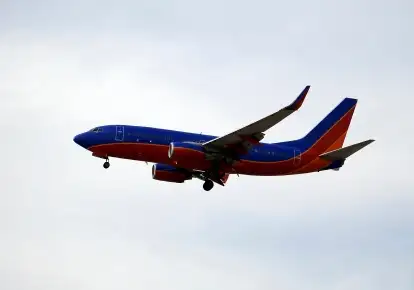
Dear Carl,
I just booked a flight on Southwest for the first time. I booked a round-trip itinerary with one-stop flights each way, but when I looked at the itinerary after booking I noticed the two segments were longer than they should have been. Upon further investigation I discovered several stops hidden in the segments, which were listed as direct flights. What gives?
-J.B
Dear J.B.,
Semantics mean a lot in the airline industry, and it’s safe to assume that any subtle difference between two similar words is there on purpose. The prime example of this is the “direct flight,” a term most commonly used by Southwest, which often strings together multiple short segments into a longer flight. Southwest calls these flights “direct” because passengers don’t have to disembark and/or switch planes.
A useful comparison is bus or train travel. A train from New York to Chicago will make numerous stops along its journey, but you only have to get off at your designated stop. Your ticket won’t note these stops, only your origin and destination. Southwest works the same way.
But for Southwest rookies, this may come as a surprise. Other airlines don’t utilize “direct” routes quite so much. Of course, this model is part of why Southwest is so successful, because it’s a pretty efficient way of transporting people heading to different destinations but traveling in the same general direction.
That said, air travel is not the same as bus or train travel, largely because taking off and landing is a much more disruptive experience than pulling into or out of a station. And while some travelers could easily sleep through several take-offs and landings, many would prefer as few of them as possible. Multiple stops also increase the risk of a delay.
So, how can you avoid finding surprise stops on your itinerary? In Southwest’s case, the routing is included in the initial search results. So while the temptation is to focus on the fares, look at this information as well and make sure the routing works for you. In Southwest’s case, it will say something to the effect of “two stops, one plane change,” and so forth. The same goes for other airlines as well. It sounds obvious, but don’t assume your routing is straightforward.
In short, read everything, and don’t make assumptions when it comes to booking airline tickets. Remember, this is your hard-earned money, and your much-deserved vacation. Make sure you know what you’re purchasing.
Readers, any suggestions for navigating the semantics of air travel?
We hand-pick everything we recommend and select items through testing and reviews. Some products are sent to us free of charge with no incentive to offer a favorable review. We offer our unbiased opinions and do not accept compensation to review products. All items are in stock and prices are accurate at the time of publication. If you buy something through our links, we may earn a commission.
Related
Top Fares From
Today's Top Travel Deals
Brought to you by ShermansTravel
12-Night Peru Escorted Tour, Incl. Sacred...
Wingbuddy
 vacation
$2198+
vacation
$2198+
Amsterdam to Copenhagen: Luxe, 18-Night Northern...
Regent Seven Seas Cruises
 cruise
$12399+
cruise
$12399+
Ohio: Daily Car Rentals from Cincinnati
85OFF.com
 Car Rental
$19+
Car Rental
$19+



